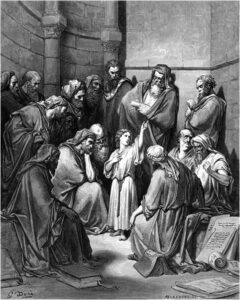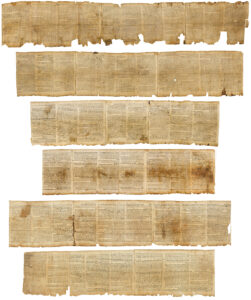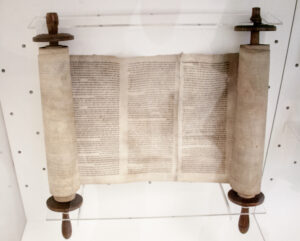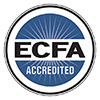By Dr. Don Bierle, FaithSearch President
In the last issue of Happ-O-getics, I challenged the view held by some scholars that the illiteracy rate among people at the time of Jesus was at least 98% (they could neither read nor write). Based on the many libraries and volumes of written documents that existed even then, the statistic is quite unlikely.
I also quoted Helen Bond, a professor of Christian Origins at the University of Edinburgh who said, “If Jesus was a carpenter/mason, as we generally suppose, then it’s not impossible that he had some rudimentary grasp of letters and/or numbers for the purposes of his trade, but I think it very unlikely that Jesus could read or write.”
In this issue, I want to challenge the naivety or nonsense of this statement regarding Jesus.
Jewish Education
The mandate of Jewish education arose from the recognition that Jehovah had revealed His Law to them, and everyone had a responsibility to know and obey it. Parents were expected to begin their children’s instruction by age three. Verses of Scripture, benedictions, wise sayings, etc., were impressed on the child with mnemonic rules to facilitate memory. The Hebrew alphabet was written on a board and the child read the letters aloud. At five years of age, reading of the Hebrew Bible began, starting with Leviticus.
At six years old, both girls and boys were sent to elementary school which was attached to every synagogue in the land. They advanced in their study to the Pentateuch, then the Prophets, and lastly the rest of the Bible, which we call the Old Testament. The goal was that every child could read the Word of God, and most would be capable of writing. At age ten, some children if especially capable, advanced to study the Mishnah and at fifteen the Talmud. By this time, they not only could read and write but were proficient in reading Hebrew, Aramaic, and often Latin.
Jesus’ Literacy

(Public domain.)
Our first awareness of Jesus’ abilities is the account of Him in the Temple at Jerusalem at twelve years of age. Properly assuming that Jesus was an advanced student of his age, His amazement of the teachers is not questionable or exaggerated (Luke 2:46-47). This required a thorough knowledge and understanding of the Hebrew Scriptures. It can be inferred that His home in Nazareth likely possessed a precious copy of the entire Sacred Volume which shaped His thinking from His earliest consciousness.
Jesus almost certainly knew how to read and write. He read (“as was His custom”) from the scroll of Isaiah in the Nazareth synagogue (Luke 4:16-20). He quoted often and widely from the Jewish holy books usually with a statement similar to “Have you not read” (Luke 6:3 quoting 1 Samual 21:6) or “It is written” (Matthew 4:4 quoting Deuteronomy 8:3).
In addition, evidence that He was familiar with the art of writing is seen in his expression in Luke 16:17 of “one iota or one little hook.” Edersheim comments: “…the Old Testament from which He had drawn was not only in the original Hebrew, but written, like our modern copies, in the so-called Assyrian [modern Hebrew characters]” to which His statement would only apply (p. 118).
Jesus was at least trilingual, speaking Greek to Pilate (John 18:33-37), Hebrew in the synagogue (Luke 4:17-19), and the vernacular of the day, Aramaic (Matthew 27:46).

(Public domain.)
Circumstantial Evidence
Reed quills are mentioned in 3 John 13. Paper (papyrus) is mentioned in 2 John 12 and parchment (animal skins) in 2 Timothy 4:13. Shorter notes were written on tablets such as the one that Zacharias asked for in Luke 1:63. In Egypt they seemed to use red ink but is black in the New Testament as indicated by the Greek word “melan” (2 Corinthians 3:3). These references suggest a “matter-of-fact” familiarity with writing, not a startled reaction to a rare phenomenon.
Conclusion
Statements about 98% illiteracy at the time of Jesus in Palestine, or that He could neither read nor write are simply not supported by the evidence. It is true that not everyone could read and write. Further, some who could read were not necessarily able to write.
But as Millard summarizes, “archaeological discoveries and other lines of evidence now show that writing and reading were widely practiced in the Palestine of Jesus’ day” (emphasis added).
Sources: “Literacy in the Time of Jesus: Could His words have been recorded in His lifetime?” Alan R. Millard, Biblical Archaeology Review Library, July/August 2003.
Sources (continued): Sketches of Jewish Social Life in the Days of Christ. Alfred Edersheim, Eerdmans Publishing Company, 1964.
“What We Know About Education in Galilee During Jesus’ Time,” Donna Gawell, February 13, 2024, retrieved July 25, 2024, https://donnagawell.com/2024/02/13/what-we-know-about-education-in-galilee-during-jesus-time




